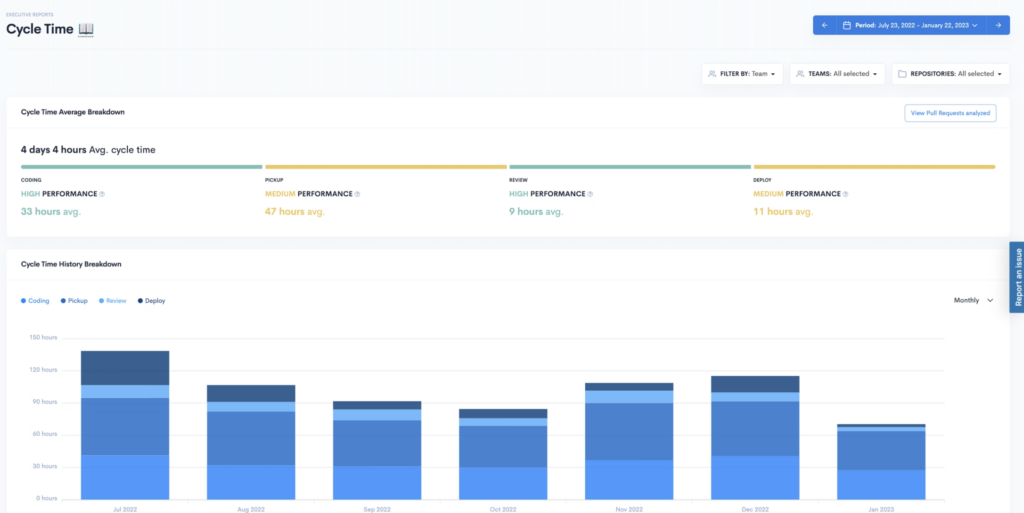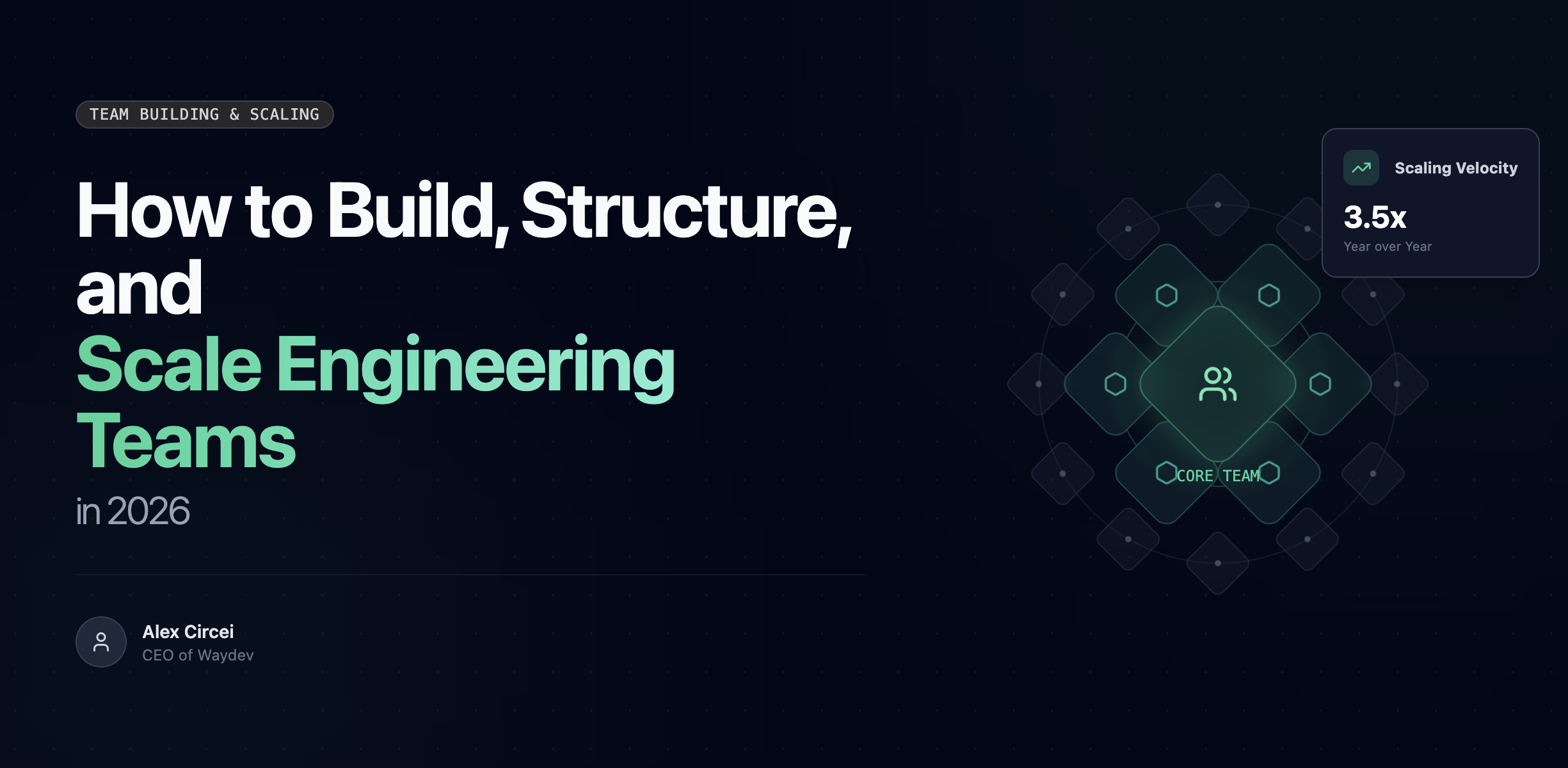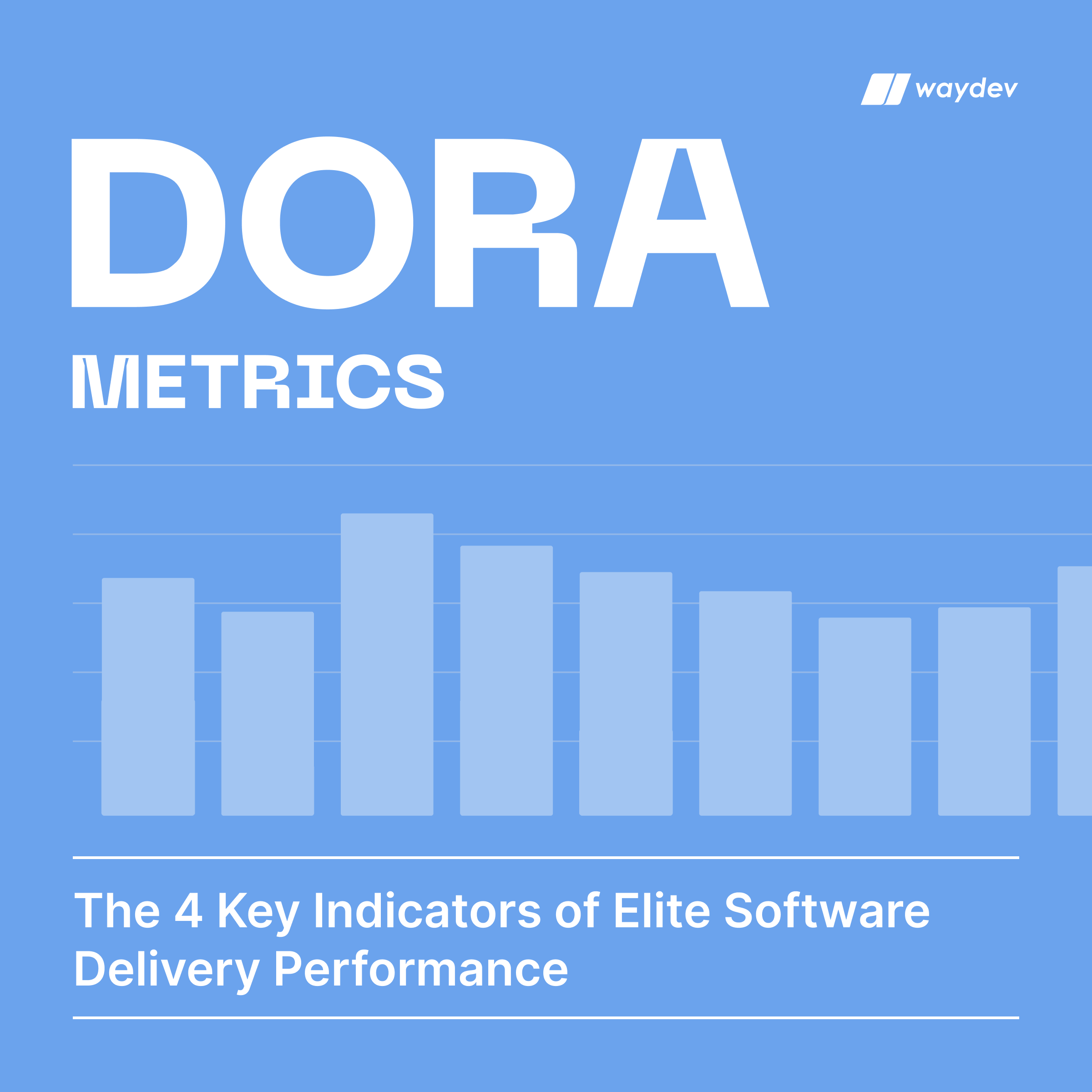Key Takeaways
- Value streams provide a framework for optimizing the process of delivering products, specifically in software development, through Development Value Streams (DVS).
- Value Stream Mapping (VSM) helps organizations visualize the workflow from idea to delivery, improving efficiency and reducing waste.
- Mapping involves identifying steps, using visual representations, and creating current and future state maps to track progress and optimize processes.
- Waydev offers analytics tools to assist in implementing VSM, allowing teams to identify bottlenecks and improve deployment processes continuously.
- Successful VSM requires continuously monitoring progress, analyzing data, and implementing improvements to enhance software delivery to customers.
The concept of value streams is a robust framework for organizing the entire process of creating and delivering a product. It involves mapping out all the steps, people, and resources required to turn a business idea into a tangible value delivery to the end customer.
In a software development organization, this framework is called Development Value Streams (DVS), which encompasses everything needed for software delivery – including tools, workflows, charts, and stakeholders such as high-level executives, engineers, and developers. Organizations can optimize their processes, reduce waste, and increase development value by utilizing value streams.
This article will focus on mapping (VSM), the first stage when creating a value stream work-frame. The concept entails” drawing a map” or stream mapping of all the steps needed to complete a project or a sequence of work. This map will show you exactly where and how you deliver value to customers. A clear overview of that will also provide means to measure whether the key points of the value stream are being met – this will allow for adjustments throughout the duration of the process.
Tech organization executives and project owners need to demonstrate leadership skills by continuous delivery of valuable software development. Value stream mapping is a critical aspect of this process, and to succeed, you need the right tools and data to organize and constantly assess and improve your VSM.
This is where Waydev comes in. As a software analytics platform, Waydev offers valuable insights and metrics for a clear overview of the workflow and progress of your project. Our solutions provide development teams with the ability to map the value stream of their software development process and identify bottlenecks, areas for improvement, and opportunities for optimization.
What Is Value Stream Mapping (VSM)?
Value stream mapping means creating a clear path that your workflow must follow in order to go from the initial idea all the way to releasing the product to customers. Having a diagram for stream analysis means no guesswork and no loose ends that could prove problematic at some point. The concept of value stream derives from Lean manufacturing principles that support the idea that anything that doesn’t add measurable value for customers is considered a waste.
Value stream mapping is a popular concept today, but it’s in no way a new one. Its origins go back to the beginning of the 20th century when a book called “Installing Efficiency Methods” by Charles E. Knoeppel illustrates graphic schemes that follow the modern VSM model. Applying these principles of organizing production workflows into value streams became popular after the 1950s with Toyota, which showed how successful the framework could be. Today the method is present in many organizations that recognize the importance of having an information flow, resources, and people involved in manufacturing reunited into a clear process that is easy to track and adjust along the way.
Applying Value Stream Mapping in Software Development Organizations
The benefits of using value stream mapping in software development are many, and they all circle back to efficiency and reducing risk. By applying this model in your tech organization, you have better control over the planning and use of resources over time and reduce waste in terms of money, time, and energy of the people involved in developing software. When you have control over these elements, you can streamline the deployment process and scale the entire business.
One of the most significant advantages of utilizing VSM is the ability to track the production process continuously, every step of the way. This allows you to make informed, data-driven decisions instead of relying on gut feelings or guesswork. With continuous flow built into your VSM, you can stay on top of all the processes in real time, making adjustments and improvements as needed to ensure the best possible outcomes for your organization.
Other benefits include:
- Reducing Cycle Time – you can decrease the time it takes to deliver a working piece of software by using stream mapping.
- Improving quality – a value stream doesn’t have to stay the same throughout the duration of the deployment process. Good stream management supported by measuring the most relevant metrics enables you to identify defects and root causes for delays and take action to prevent them from moving forward. This will ensure a better quality of your deployment processes and of the work needed to bring value to customers.
- Optimizing workflows – value stream mapping can help you visualize the flow of work from idea to delivery by identifying bottlenecks and delays.
Value Stream Mapping Exercise for Software Development
When creating a value stream map, you need to check certain steps to ensure a smooth information flow. This will also provide the right data to be collected for future reference and create the steps for delivering customer value. Please remember that value stream mapping can be subjected to continuous improvement and can be perfected over time. Here are the main steps when creating a value stream for your software engineering organization:
1. Establish the Scope with the Customer’s Perspective in Mind
The first step in the value stream mapping process is to clearly identify what you’re streamlining. You need a clear understanding of the new software product or new feature that will be delivered. Next, it’s important to understand that a value stream shouldn’t be applied for the entire process because it would quickly become overwhelming. Instead, try chopping the project into smaller batches and creating a value stream for each one – you can have multiple VS running simultaneously and keep track of all of them. Defining the scope for each of these frameworks is the beginning of your mapping process.
2. Identify Each Step of the VSM and Use Visual Representation
The first step in implementing a successful value stream mapping process is to identify each step of the VSM and use visual representation. This requires creating a comprehensive scheme of the entire process, starting from the initial stage, such as a client request or a business idea for a new product.
As you map out each step, it is important to document everything that needs to happen from beginning to end to gain a precise understanding of the process. To make this more effective, visual representation can be used to create a clear and concise picture of the workflow.
It’s also essential to keep track of the timelines for each step as the workflow progresses. This data is critical in identifying where delays occur, allowing you to investigate the root causes and make informed decisions to improve the overall process. With the right tools, you can identify inefficiencies, optimize workflows, and create a more efficient and effective process from beginning to end.
3. Choose the Right People
Make sure you identify all the people you need to complete each stage of the process, such as the designers, engineers, developers, and everyone involved in elaborating and delivering the workpiece at the center of your value stream. Please remember that assigning the right tasks to the right people is crucial to your success. Make sure they have the right skills, resources (be it in terms of supporting tools or finances), and motivation necessary for delivering value in a timely manner.
4. Develop a Current State Map
Have your team document each step of the current state of the workflow, as this will help you see your starting point, or, better yet, try using an analytics platform that will feed data into complex dashboards without any manual input. This will help you understand where root issues may come from and what is causing delays in the delivery process. Does your development team have the right tools? Are there too many dependencies between teams, and is there too much wait time during handoffs? All of these questions and many more should be addressed to identify potential bottlenecks that could have a negative impact on your entire deployment process. Be inquisitive and leave no stone unturned because the results of this analysis will surely be enlightening.
5. Create a Future State Map
Creating a future state helps you translate your goals into a concrete diagram of the deployment process. Ask yourself how you would want the delivery process to look from the first stage of an idea or client request all the way to release. Go through the entire value stream with what the ideal steps would be and create a map of this vision. You can use this model as a benchmark and compare the current state map to it, as this will highlight discrepancies and parts that don’t go as expected. Here you have identified areas for optimization, and it will give you a chance to work on them while the process is still running or use this model for future VSM.
6. Implement Changes
Use metrics to analyze the data collected in your value stream life cycle to understand what are the areas holding you back. Put them in context with the help of complex dashboards that reunite everything you need to make decisions and implement the necessary changes for quality assurance.
Value Stream Mapping Symbols
The practice of mapping value streams has a number of generally accepted symbols to make it easier to illustrate the process. Here is a description of the main symbols of VSM and the categories they fall into:
General Symbols
- Timeline: refers to waiting times or processing times, and it’s the basis for calculating Cycle Time or Lead Time.
- Operator: is the symbol for an employee
- Idea: speaks to the proposed ideas or solutions for ongoing work.
Processing Symbols
- Supplier/ customer: illustrates the entry and end point of the value stream.
- Shared process: indicates value streams that are shared by multiple teams.
- Dedicated process: flow speaks to material that flows through an operation or process within the value stream.
Material Symbols
- Safety stock: is used to back up the system in case issues occur.
- Inventory symbol: contains various details regarding stock.
- Push arrow: symbolizes the flow of material through the value stream.
Information Symbols
- Signal Kanban: indicates a critical drop in stock level.
- Go see: refers to visual information collected directly by a manager.
- MRP / ERP: talks about Material Requirements Planning and Enterprise Resource Planning.
Optimizing Value Stream Mapping
No matter how rigorously you organize your value stream in the mapping phase, one thing is for certain – there is always room for more value in any process. You can get better results if you choose the right tools and metrics for constant optimization and are willing to put in the effort to implement the necessary changes, whether these are new features or task-switching requests.
Here is a breakdown of the steps you can take to maximize your VSM:
1. Identify areas of waste – analyze the value stream and check for areas of waste. This could be anything from the wait time, handoffs that are too slow, too many steps and approvals necessary to go to the next step, lack of tools or lack of skills, or partially completed work.
2. Analyze data – creating a map of your value stream at the beginning of the process is not enough for results to appear. Instead, you need to analyze the workflow and efficiency of the deployment process throughout its duration. In order to do so, you need to choose the right tools and metrics to monitor how each step is being executed and the necessary timeline.
3. Streamline the process – try to find ways to enhance teams’ efficiency by streamlining the deployment process.
4. Implement process improvements – once you’ve identified the areas that need improvements, it’s time to put them into practice. Make sure you find the best solutions to do so and keep the momentum going.
5. Monitor progress – choose the right tools and metrics to keep track of teams’ progress in executing their tasks and getting workpieces closer to the delivery point. Use metrics such as throughput, defect density, or Deployment Frequency to see where your teams are at.
6. Continuously improve – use the collected data through metrics to make informed executive decisions and to continue to improve your current and future value streams. Remember that VSM is a dynamic process that thrives when adjustments are constantly made.
The Best Tools for Value Stream Mapping
Value stream mapping reunites the people, steps, and resources necessary to deliver value to customers. This is a staple in every organization motivated to streamline their processes and deliver better software applications to clients faster. The key to maximizing the benefits of applying this Lean thinking concept is to create a solid base for it through a detailed map. This will dictate the management of your delivery, measure team performance and efficiency, and give you a complete overview of your organization’s deployment process.
Selecting the appropriate tools is essential to create a detailed value stream map and measure its progress from request to delivery. Our platform provides comprehensive dashboards with insightful metrics that enable you to better understand how well VSM is being implemented.
With our platform, you will have all the necessary data in one place, making it easy to visualize and put everything in context. Our dashboards provide clear and concise information that can be used to improve the value stream mapping process and optimize workflows for better results.
If you want to see our platform in action and learn more about how it can benefit your organization, contact us today for a demo. Our team will be happy to show you how our platform can help you gain better insights into your value stream mapping process and drive success.















